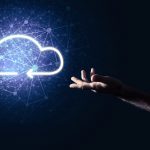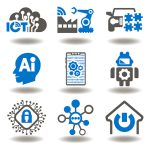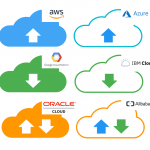CIO’s primer on IoT
In this CIO primer I am going to introduce IoT, starting from the basics, discussing the key questions and considerations for building an IoT strategy, highlighting top IoT cloud providers and then concentrating on the Azure offerings from Microsoft. IoT is one of the core technologies along with Cognitive Computing and Machine Learning which makes the core of many Digital Transformation initiatives going on in many enterprises around the globe. If you are interested in knowing how Cloud Computing and Digital transformation are interconnected then check out my other blog post about how Cloud computing is helping the digital transformation journey of many companies.
The Basics
The Internet of Things (IoT) can be a lot of things—a robotic arm in a connected factory, sensors that help monitor and control a smart building or home, an intelligent coffee machine in your office, and much more. The Internet of Things has huge business implications and benefits associated with it. In many scenarios it is helping businesses automate and provide quick and exceptional customer service experiences. It helps businesses connect all their devices through their internal network or the Internet, collect data and analyze it for gaining insights. These insights can then be used to take actions on the connected devices. For this reason, when you sign up for IoT services with a particular provider you will notice that behind the scenes multiple services are going to be provisioned to account for gathering data, analyzing it, creating insights and then giving you ability to take action from a central dashboard.

Some common business scenarios include monitoring the devices and taking actions on the devices which are about to fail or have failed. The actions may include updating the firmware on a device, rebooting it or sending technical support personnel to fix an issue on a device which is about to fail and can’t be fixed via automated procedures.
Industry trends and numbers
IoT statistics are truly mind boggling. According to an estimate by Statista, by 2020, the installed base of the Internet of Things devices is forecasted to grow to almost 31B worldwide. By 2025 the installed base of IoT devices will be over 75.4B devices. Source: Statista, Internet of Things (IoT) connected devices installed base worldwide from 2015 to 2025 (in billions). Manufacturing sector is the biggest contributor to IoT’s growth followed with Healthcare, Transportation, Utilities, Smart Cities and Healthcare according to a Verizon report.

According to another report from GrowthEnabler, the global IoT market will grow from $157B in 2016 to $457B by 2020, attaining a Compound Annual Growth Rate (CAGR) of 28.5%. Gartner also predicts that by 2020, more than 65% of enterprises (up from 30% today) will adopt IoT products. By 2020, more than 10% of new IoT products from traditional industries will be headed by a CIO. Another report from Cognizant, it is estimated that 72% of the companies will increase their IoT spending in the next three years.
What to consider for your strategy
As a part of your IoT strategy you will have to look at various factors and consideration. Some of these factors may not apply to your situation but a few key ones including scale, performance, redundancy, and security should always be considered as you build out your strategy. In order to get started there are a few things which should be considered carefully – deciding if you have expertise in-house to help with the implementation and maintenance of the IoT service or you need to bring in someone externally to assist with the initial analysis and building out an implementation plan. As a part of the analysis you will have to consider if your devices have the ability to get connected to the network and are compatible with the IoT offerings from various providers. This may be one of the key factors which will help you decide the provider. Other factors to assist you in deciding the provider will include data storage and visualization services along with device management capabilities. In most of the use case scenarios you will want to perform warm data analysis as the data is streaming from the devices but in a few cases you may want to store the data and perform the analysis at another designated time. Depending your devices and setup you should also look into either running the Edge IoT to see if the device data should be analyzed on the device itself rather than in the Cloud. Once you have considered all these critical factors, I believe you will be ready to select the right IoT Cloud provider for your scenario.
- Security
- Performance
- Scale
- Redundancy and disaster recovery
- How to get started?
- In-house or external help?
- How to connect devices which are hard to connect?
- Device management and lifecycle
- Data storage and visualization
- Cold vs. warm analysis
- Hybrid Cloud and Edge Computing
- IoT provider selection
Cloud provider IoT offerings
There are several Cloud IoT providers out there who tout their solutions and offer functionality around scale, performance, redundancy, and security. Some prominent ones to mention here include Microsoft, Amazon, Google and IBM. In order to pick the right provider you need to carefully analyze the requirements as outlined in the previous section and then pick your provider appropriately.
Microsoft Azure IoT offerings
Microsoft offers a wide range of IoT solutions for you to consider and choose depending on your needs. Here is a good starting page for you to review on what IoT offerings Microsoft has. What I really like about the Microsoft offerings is the ability to pick either their SaaS or PaaS IoT offering. The SaaS solution is referred to as Azure IoT Central and the PaaS solution is known as Azure IoT Solution Accelerators formerly known as Azure IoT suite. Azure IoT Central is SaaS solution that helps you get started very quickly and securely connect, monitor, and manage your IoT assets at scale within hours and without requiring Cloud development expertise. On the other hand if you are looking for a customized solution, then you want to start with their PaaS Azure IoT Solution Accelerators option. It provides multiple templates which can be used as starters to help you build out a fully customized solution. For a quick comparison on the differences between the two offerings you can check this official documentation out from Microsoft. Microsoft also offers IoT edge services if you are interested in running workloads on your devices and doing the data analysis on them rather than sending it to the Cloud for analysis.
On a personal note, one of the best way to learn about IoT is to use one of the many Starter Kits available out there. Each Cloud IoT provider will have a list of certified devices and kits which work with their IoT offerings. You can browse through this catalog to review which devices or kits are available and certified for Azure. One such example of a kit is the Adafruit Feather Huzzah ESP8266. I had students in my graduate class at University of Washington use this kit to connect to Azure using this tutorial. For this tutorial they used one of the Azure solution accelerators templates to monitor, analyze and visualize the temperature and humidity provided by a sensor included in the kit. This by far was their most favorite assignment of all their assignments since they had to first assemble the circuit on a breadboard with the sensor, connect the circuit to their laptop and then configure the IDE to send the data to their Cloud accelerator solution.
Join our Mailing List
Subscribe to our mailing list and get additional information around Cloud, Cloud Computing, Leadership, Digital Transformation, Social Media and Content Marketing.
Thank you for subscribing.
Something went wrong.
Leave a Reply
Leave a Reply
Join our Mailing List
Subscribe to our mailing list and get additional information on Digital Transformation, Cloud, AI, ML, IoT, Emerging Technologies, Education, Training and other related topics
Thank you for subscribing.
Something went wrong.






About the author